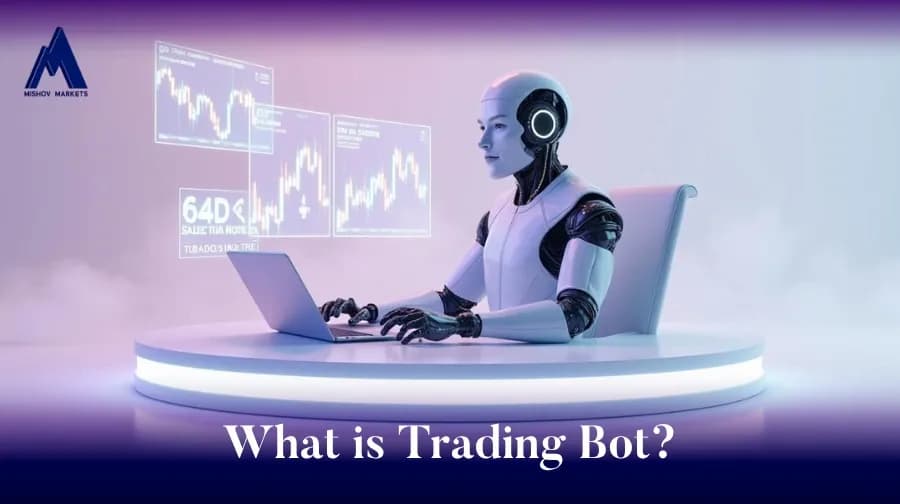What is a Trading Bot

Forex trading robots or trading bots, are automated software tools developed to execute trading strategies in the foreign exchange market. These bots leverage complex algorithms and advanced data analysis to monitor market trends, identify potentially profitable trades, and execute orders swiftly without human intervention. The forex market operates 24/5, presenting traders with continuous opportunities that require quick decision-making and action. Trading bots are especially beneficial for traders who cannot be constantly on their screens or wish to minimize human errors and emotional decision-making. By analyzing vast amounts of historical and real-time data, trading bots can adapt to changing market conditions and optimize strategies for the best possible outcomes. They are programmed to follow specific criteria, enabling them to react to price fluctuations, news, and indicators much faster than a human trader could. Ultimately, trading bots enhance trading efficiency and can be essential for those seeking consistent performance in the forex market.
What is a forex trading bot and how does it work?
A robot is software that can do some specific planned work. They are often used to perform repetitive tasks automatically. Timing is everything in the forex market. For instance, you can consider traders who have to be glued to their monitor to watch a single change and wait for a profitable opportunity. They can solve this problem by using automated trading software, also known as trading robots. This can be helpful for traders who don’t want to monitor the market 24 hours a day. Also, you can plan some options for robots, and they execute orders faster than you when doing other activities. But we want to know whether robots are effective in the trading market or not.
Types of Forex trading robots:
There are many varieties of bots in the forex market. Expert advisors allow traders to take advantage of an automated assistant, whether to do all the work, including technical analysis, finding optimum trading opportunities and also executing trades on their behalf, or to use different types of forex trading robots for having an extra hand in the markets. Here are the 4 types of Forex trading robots along with their performance and key features:
1. Automated trading robots
These trading bots act as fast-performing robots that can be designed for multiple trading strategies, like HFTs (high-frequency trading), scalping, day trading, and swing trading. There are many predesigned trading bots available that can be purchased from the MQL5 website. These robots could be especially effective for those who can’t afford the time to sit and monitor every market fluctuation, but choosing the right trading robot also requires a good understanding of the market.
2. Indicators
building a custom indicator functions, to retrieve indicator values from historical or live chart data; These functions allow the trading robots to read the calculated output of indicators at specific candles or timeframes, enabling them to monitor price patterns, trends, momentum, or volatility without performing the mathematical calculations manually, and instead, the EA acts like a reader or analyzer of indicator results, or even vice versa, traders can use this feature to create their own indicators from price actions themselves. essentially pulling and interpreting data from indicators or candlesticks that would otherwise be visualized separately on the chart;
3. Trading assistants
These trading bots essentially try to be tools for making trading more immediate and precise for traders. The goal is for traders to focus only on the trade and help them to maximize their efficiency when working with the trading platform. These trading bots can be designed to help traders interact more easily with the platform, enabling tasks like opening and closing trades, making the trades risk-free more quickly, setting stop-loss and take-profits, etc., to be done seamlessly.
4. Risk management tools
These trading bots manage risk in trades by setting predefined rules in the EA code to control trade size, limit potential losses, and protect capital. This includes calculating lot sizes based on account balance or equity, setting stop-loss and take-profit levels based on trading volume, using trailing stops, and implementing maximum drawdown limits. by automating these rules, these trading bots ensures consistent application of risk strategies across all trades, reducing emotional decision-making and helping to preserve the trading account over the long term, especially in volatile market conditions.
Now you can read some of the most important criteria used for choosing these robots:
1. Historical Performance: Robots with consistent profitability over time.
2. Trading Strategies: Effectiveness in using scalping, trend-following, or counter-trend strategies.
3. Risk Management: Tools like stop-loss and take-profit to manage risk effectively.
4. Customizability: The ability to adjust settings for different market conditions.
5. Ease of Use: User-friendly interfaces for both beginners and advanced traders.
6. Support and Updates: Ongoing customer support and regular updates for optimization.
7. Transparency: Independent reviews and clear performance data.
8. Reputation: Robots with a strong market reputation and positive user feedback.
9. Demo Testing: Good performance in demo accounts before using them in live trading.
The choice of the right robot depends on the trader’s needs and trading style, and it’s important to test the robots in demo accounts before using them in live trading. Also, you have to know that the performance of a robot may be different in real accounts because the market could be unpredictable.
What does a forex trading robot do?
Forex traders utilize trading robots (Expert Advisors) to automate their trading strategies, such as managing stop-loss and take-profit levels, executing market entries and exits, handling multiple positions and orders simultaneously, and performing other tasks automatically.
Are forex trading bots a good idea?
Forex robots can be highly effective in providing services to traders. However, you must have sufficient knowledge about the quality of services the robots offer, stay informed about market volatility, and verify whether your broker allows the use of robots based on your account type.
In many cases, due to traders’ lack of attention to certain essential factors, the robot may not function correctly, leading to losses. Therefore, for verification, it is advisable to test the robot under various market conditions to ensure reliability.
Benefits and risks of using a Forex trading robot:
The benefits of using a Forex trading robot are substantial:
• Market Analysis and Emotion-Free Trading: Forex robots tirelessly analyze market data, identifying optimal trading opportunities without emotional bias. They operate purely on data, eliminating impulsive decisions driven by fear or greed.
• Lightning-Fast Decision-Making: Trading Robots can process massive amounts of information in seconds and make split-second decisions, far outpacing human reaction times. Unlike human traders, they remain entirely focused and unaffected by distractions.
• 24/5 Uninterrupted Trading: Designed to trade continuously, Forex trading robots can operate 24 hours a day, five days a week, without fatigue, ensuring no trading opportunity is missed during open market hours.
• Performance Validation: With backtesting capabilities, you can assess the robot’s performance under various market conditions before deploying it in live trades, giving you confidence in its effectiveness.
• Algorithm-Driven, Automated Execution: These trading robots run based on sophisticated algorithms and predefined strategies, handling every trade from entry to exit autonomously and consistently, leaving no room for human error.
Despite all the advantages mentioned, expert advisors also have their drawbacks and potential issues. During highly volatile market conditions, these trading robots may malfunction, potentially leading to significant losses for the trader. They can sometimes execute more trades than intended based on the set strategies, which may exceed the trader’s actual needs or goals.
Another downside is performance issues. Just like any software, trading robots require updates to adapt to the constant changes in the market. If a system error occurs while the trader has no direct access to the market, it could result in considerable and sometimes irreversible losses.
Moreover, using various expert advisors increases the risk of encountering scam robots. New or inexperienced traders looking for substantial profits are often the ones who fall for these scams. Therefore, it’s crucial to thoroughly verify the credibility of any robot before incorporating it into a trading strategy.
Are forex trading robots profitable?
Trading robots can be beneficial, provided that you, as a trader, do not become entirely dependent on them. They should be used to enhance the speed and efficiency of your trading operations. Ultimately, you remain the one making the final decisions and monitoring the trades. An expert advisor can assist in executing trades, but you must maintain full control and oversight to ensure the strategy aligns with your risk management and trading goals.








